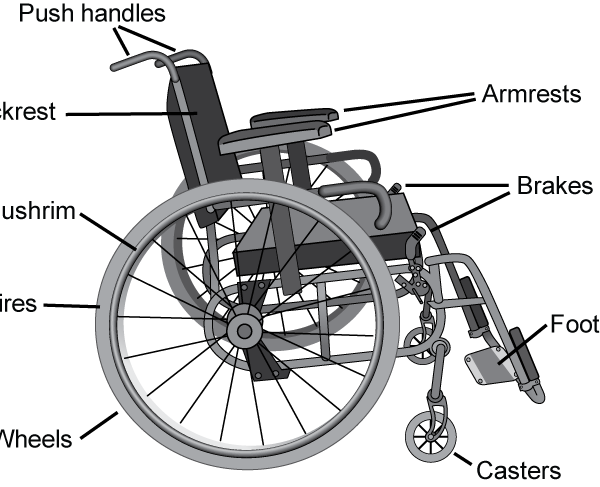Manual wheelchairs can be beneficial if you find yourself needing some help getting around. With age comes illnesses that can affect our ability to walk as well as we once did. Manual wheelchairs – which are moved by a person without the assistance of a battery or any other motorized mechanism – can offer you the ability to be mobile and stay independent for longer.
There are two basic types of manual wheelchairs – self-propelled and companion-propelled. Self-propelled requires the wheelchair user to move the chair with the use of their arms and legs, usually by pushing the arms forward as the hands grab the rims of the wheel. Companion-propelled means another person has to push the chair with the handles located on the back of the chair.
Manual wheelchairs are typically more cost-effective than other types of chairs. They are also generally easier to store and transport. Selecting the right chair is important, especially for first time users. Some people often choose a chair based on what insurance will pay for, but it’s important to consider style, weight and performance.
.
How Should I Choose A Manual Wheelchair?
When choosing a wheelchair, it’s important to consider comfort, as well as mobility. You don’t want a chair that will limit your body movement, cause pain or pressure sores, or be uncomfortable to sit in. So be sure the chair is the right size for you.
Before you buy a manual wheelchair, take measurements to ensure you get the proper fit. Take into consideration the seat width, seat height and seat depth. The most popular seat width is 18 inches, but to ensure it’s the proper fit for you, measure your backside from hip to hip and add two inches to allow for bulky or winter clothing.
One of the most common issues for wheelchair users can be the seat pinching the backs of their knees. To avoid this problem, measure the seat depth. If you can fit three or four fingers horizontally between the front edge of the seat and the back pit of the user’s knees, then the seat depth should be adequate.
To determine the seat height, measure from the user’s heel to the back pit of their knee and add two inches to make sure the foot rest is a proper amount off the floor. The average adult size is typically between 19.5 and 20.5 inches.
Don’t pick a chair that you feel squeezed into. Make sure you have enough space to move in the seat, rotate your upper body and move your arms. It’s important, if possible, to pick a chair that supports good posture, keeps your head, neck, and spine aligned, as well as your pelvis, hips and knees.


